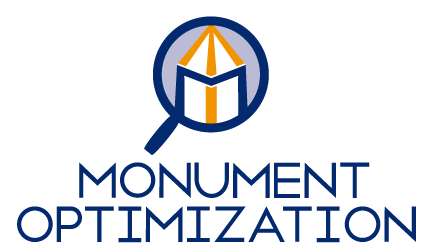Relevant Case Studies:
Case Study #1 – Political Fundraising for a “Super PAC”
Case Study #2 – Petition-based campaign for nurses union
Case Study #3 – Most expensive Congressional primary in history
Case Study #4 – How $30,000 of online ads helped defeat $700,000+
Case Study #5 – Prevent dangerous legislation that would expose American investors to $75 billion in liabilities
Case Study #6 – Awareness campaign to stop legislation
Case Study #1 – Political Fundraising for a “Super PAC”
Goals
- Generate political donations to crowdfund a “Super PAC” through online advertising, A/B testing, and analytics data.
- Analyze data from A/B testing, analytics and other ad data to determine most effective messaging to be used elsewhere in the campaign
- Improve conversion rate to increase donations
Results
- Fundraising – Ads, SEO, and A/B testing helped raise $5m+ within 30 days (June 4 – July 4th 2014) from over 45,000 donors.
- Boosted conversions – A/B testing and conversion rate optimization improved overall conversion rate 250%+ and conversion rate of mobile traffic 160% within 30 days.
- Leveraged data
- In order to identify the most effective messaging, online advertising was used as a sandbox to test 68 different messages and combinations of creative.
- Findings from ad data were leveraged to craft the most engaging social media content, communicate effectively to the media, boost effectiveness of email marketing, guide further website and landing page testing, and ensure initial TV and radio advertising would resonate as much as possible.
- Traffic – Generated 750,000 visitors within this 30 day fundraising window (June 4 – July 4th 2014).
- Publicity – Fundraising accomplishments featured in New York Times, Washington Post, and dozens of other leading news publications.
Case Study #2 – Petition-based campaign for nurses union
Goals
- Use ads to help generate significant signed petitions to reinforce importance of broader awareness campaign
- Increase visibility of nurses union’s efforts to fight ebola alongside relevant online articles
- Differentiate this nurses union from other nurses unions
Results
- Generated 25,000 signed petitions off $83,000 in ad spend
- Lowered cost-per-petition from $8/petition to <$2/petition
- Increased conversion rate 300%+ through A/B testing messaging in ads on landing pages and optimizing campaign for mobile devices.
- Influenced CDC to protect American nurses and change ebola protocols
- Gathered favorable press about National Nurses United to help it gain market share against the leading nurses union
Case Study #3 – Most expensive Congressional primary in history
Background
- The 2016 Democrat primary in Maryland’s 8th district was already the most expensive congressional primary in US history. David Trone, an entrepreneur, had self funded his campaign with a $12.4 million war chest while Jamie Raskin had only raised $1.2 million. The Mayday PAC entered into this race to support Raskin not only for his commitment to address meaningful campaign finance reform, but also since this race was the epitome of big money politics.
- While the Mayday PAC’s ad buy was small compared to David Trone’s advertising budget, as an unaffiliated Super PAC MAyday was able to make statements Raskin could not make on his own. Moreover, Mayday’s wealth of ad data could be leveraged to run more effective ads, minimize wasteful ad spend, resonate with the most important voters, and outbid Trone’s campaign in the places online that mattered.
Results
- While lean, Mayday’s online advertising support was precise, agile, and able to deliver 900,000 impressions to the voters most likely to support Jamie Raskin while persuading likely Trone supporters to vote for Jamie Raskin instead. David Trone clearly spent more money on advertising, but Mayday’s efforts were exponentially more efficient and influential.
- Despite being underfunded by over $10 million, Mayday helped Jamie Raskin decisively win this primary–capturing 33 percent of the vote compared to Trone 28 percent.
Case Study #4 – How $30,000 of online ads helped defeat $700,000+
Goal
- Use online advertising, search engine optimization, and carefully crafted viral content to help Bob Wieckowski defeat MAry Hayashi in a state senate primary.
Results
- So effective that even though this was a State Senate race in California, the campaign garnered attention in national media. Slate magazine went as far as to give this campaign the distinction of being “The Negative Campaign of the Year (So Far)”
Case Study #5 – Prevent dangerous legislation that would expose American investors to $75 billion in liabilities
Goal
- Use online ads to expose backroom dealings and prevent a rider in the Omnibus Spending Bill that would expose investors to $50+ billion in losses.
Results
- Launched campaign within 24 hours (interest group creation and branding, website design/development, ad design, campaign launch)
- Generate 2.5 million impressions per day on Capitol Hill alone
- Generated very favorable publicity through client’s point-of-view in top outlets like the Washington Post, Wall Street Journal, and Washington Examiner
- Helped prevented casino lobbyists from using the Omnibus Spending Bill to overturn a law and prevented $8 billion in client losses and $50+ billion losses bond market-wide.
Case Study #6 – Awareness campaign to stop legislation
Goal
- Use online ads as part of integrated public affairs campaign to prevent congress from replacing $1 bills with $1 coins.
Results
- Generated 7,000 petition signatures from a $40,000 ad budget
- Generated favorable press with client’s perspective in top media outlets, like NPR
- Defeated bill before it could even make it to Congress for vote

